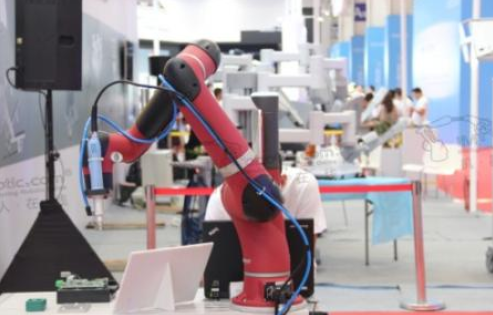What problems will robots bring to human employment, increase or decrease?
The dual nature of robot development has long been a topic of debate among global experts. As robotic technology advances rapidly, its impact on employment remains a contentious issue. Some argue that robots will create new job opportunities, while others believe they will lead to job losses. What is your perspective on this?
In 2015, the Chinese government launched the "Made in China 2025" initiative, which emphasized the importance of robotics in industrial development. The following year, the country introduced the "Robot Industry Development Plan," aiming to position robots as a key driver for high-end manufacturing by 2020. This strategy aligns with the growing trend in China's robotics sector, where the growth rate of industrial robots has been the highest globally since 2013. Between 2010 and 2015, global manufacturing robot density increased by 32%, while China saw a staggering 230% rise—far exceeding the global average. Given this context, it's essential to consider how the rapid expansion of robotics affects employment.

Historically, similar concerns arose during the Industrial Revolution, when many feared that machines would displace workers. However, technological progress ultimately led to a reorganization of labor rather than mass unemployment. It improved efficiency and allowed industries to grow, creating new job opportunities. When companies adopt robots, they often reduce the need for manual labor, but at the same time, they can expand production and generate more jobs overall. Therefore, while robots may replace certain roles, they also enhance the value and efficiency of remaining jobs. In hazardous or repetitive environments, robots are particularly valuable, as they can take over dangerous tasks, improving safety and productivity.
Since the Industrial Revolution, the evolution of industry has always been driven by technological innovation, which reduces reliance on human labor. Each new technology typically lowers direct manual input in production. However, history shows that such advancements often create more jobs in other sectors, especially in services. Similarly, the rise of robotics has reduced the demand for low-skill jobs, but it has also generated high-value positions, such as robot maintenance, programming, and system management. These roles not only provide better wages but also reflect the evolving role of humans in an increasingly automated world.
Improved product quality and lower costs can drive market expansion, making goods more accessible to a wider population and boosting demand. For example, if cars were still built using outdated technology, they would be less reliable and much more expensive, limiting sales. Today, companies like those producing smartphones and tablets rely heavily on automation to keep costs down and maintain competitive pricing. Without robots, these products might be too costly for most consumers, hindering market growth.
The fear that robots harm employment is widespread, but research from the Harvard Business Review suggests that fully automated jobs may disappear. However, partial automation can actually increase employment by boosting efficiency and demand. From 1995 to 2005, the IT revolution boosted labor productivity by 0.6% in Europe, the U.S., and Japan, and overall employment rose by 1%. This indicates that when productivity increases enough to stimulate demand, it can lead to more jobs.
According to a 2017 report by the International Federation of Robotics, each robot sold creates 3.6 new jobs across various fields, including R&D, production, support, quality control, and sales. This data shows that there’s no fundamental conflict between “robots reducing jobs†and “robots creating jobs.†Rather, the former focuses on short-term impacts, while the latter highlights broader, long-term benefits. As we move forward, understanding this balance will be key to navigating the future of work in a robotic age.
Niobium Alloys,Niobium Sheet Stock,Tantalum Niobium Alloys,Tantalum Niobium Alloy Customization
Shaanxi Xinlong Metal Electro-mechanical Co., Ltd. , https://www.cnxlalloys.com